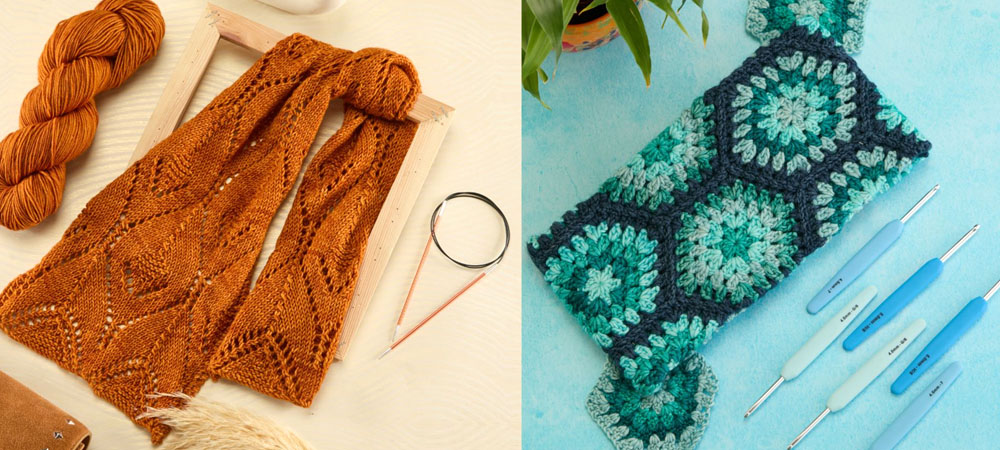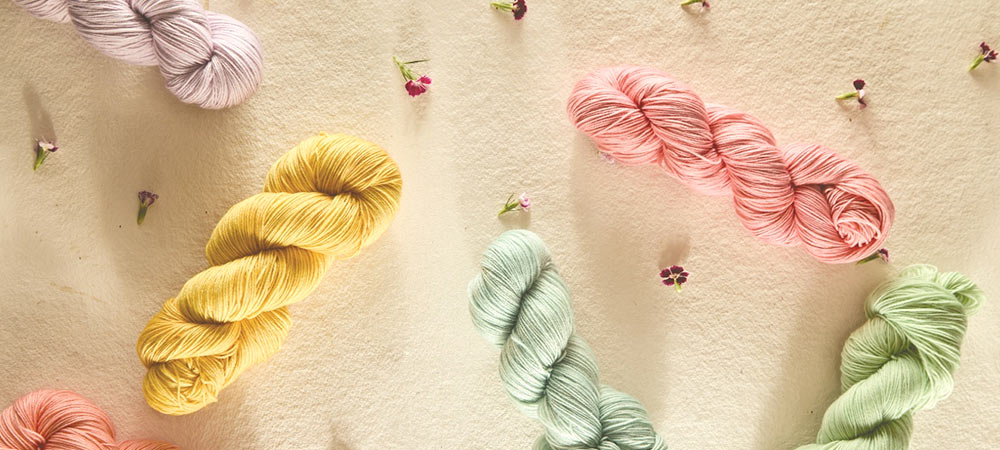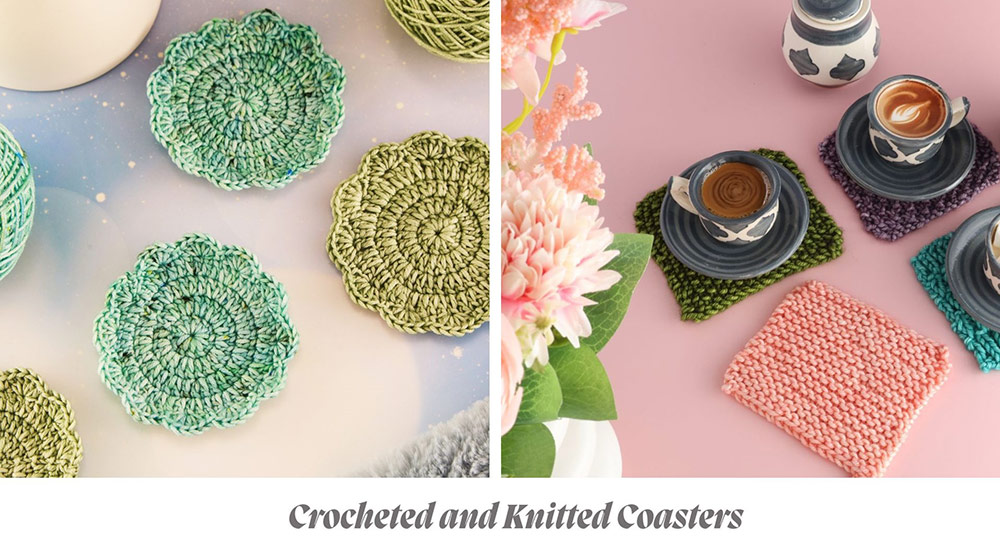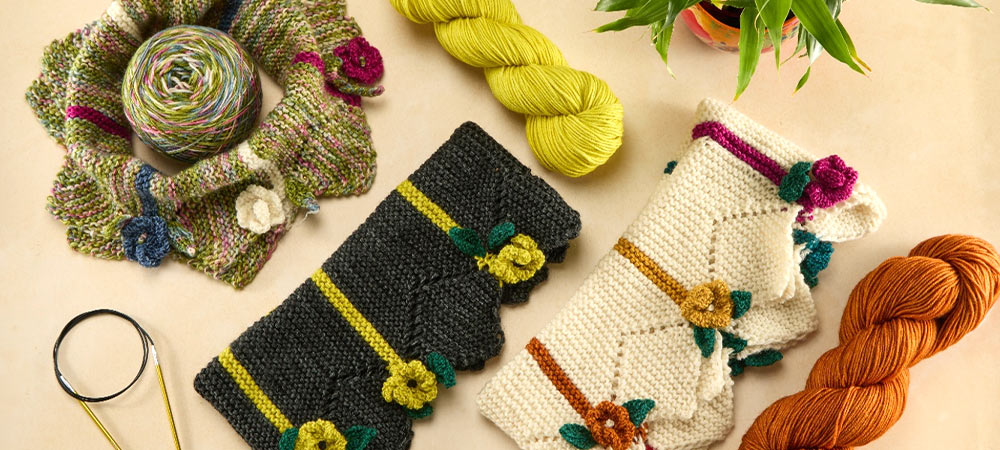Knitting vs Crochet: The Complete Guide for Yarn Lovers
- Blog Views : 1912
- Symfonie Yarns
- 04Jan, 2025

Knitting and crochet are the most popular techniques when it comes to crafting with yarn. Both crafts offer endless possibilities for creating garments, accessories, home décor, and more. Besides yarn, both crafts share benefits such as creativity, mindfulness, stress relief, and more. You can create garments, accessories, home décor and more with colorful yarns and knitting or crocheting skills. While both crafts revolve around yarn, the way they interact with yarn is different. If you want to step into yarn crafting or are a knitter or crocheter wanting to know more, in this blog, we’ll explore the complete guide on knitting vs crochet. Our guide will help you make decisions and enjoy crafting.
Knitting vs Crochet: Everything you need to know
First things first; for a yarn lover there’s no knitting vs crochet, both are simply ways to do something great with yarn. If you’ve got hand-dyed yarns, you have the potential to create wonders with your knitting needles or crochet hooks and other craft forms. Most yarn for knitting is also suitable for crochet projects unless you’re planning out a special project or size.
Knitting requires knitting needles. Basically, there are two tips (single-pointed or circulars joined with a fixed or interchangeable cable) but you may need four or five double-pointed needles to knit small circumferences. For crochet, you only need a crochet hook. There are options of single-ended, double-ended and interchangeable hooks but you work with only at a time.
Now, diving into the topic of knitting vs crochet, the top factors are:
1. Yarn Fiber and Yarn Weight
Yarn for knitting and crochet are generally the same however, the preference in fiber and weight depends on the project and the maker. Wool, alpaca, and cotton are popular fiber choices with extrafine merino wool beloved by every yarn lover. The yarn fiber is soft, skin-friendly and generally available in hand-dyed semisolid and variegated shades. Wool’s elasticity makes it ideal for intricate knit patterns, while crochet brings out its warmth and structure. Blends of natural and fibers combine the best qualities of both worlds. For example, a merino-polyamide yarn blend works beautifully in both knitting and crochet, offering softness, durability, and vibrant color retention. While merino-silk yarn looks and feels premium for lace shawls and garments.

Knitting and crochet can work with almost any yarn weight, from delicate lace to chunky and bulky varieties however, the results vary significantly based on the chosen technique. Knitting creates a more structured and uniform fabric due to its interlocked loops. This technique is often preferred for projects requiring drape and elasticity, such as sweaters, shawls, or socks. Crocheting results in a thicker and denser fabric, therefore an excellent choice for blankets, home décor items, or winter accessories that benefit from added warmth.
Fingering weight yarn for knitting works beautifully for socks, scarves and lace patterns as does with crocheted lace and scarves. With DK yarn, knitting offers endless options of garments, accessories, etc. as does crochet, from a classic granny square to even a medium-sized blanket. Worsted weight yarn, leaning towards the slightly bulky yarn weight is perfectly beginner-friendly for knitting projects. You can knit and crochet with almost any weight from the yarn collection.
2. Yarn Usage
Another point of difference between knitting and crochet is the amount of yarn. Knitting tends to use less yarn compared to crochet. Knit stitches are tighter which means that you can stretch your yarn supply further while crochet stitches are bulkier. The amount of yarn for crochet projects is slightly higher than knitting. So, if you plan to knit or crochet a pattern, first start on a gauge swatch.

Check - Free Knitted Coaster Pattern
3. Texture and Appearance
The texture and appearance of knitting and crochet truly stand apart. Knitting generally has a smooth and even texture. Basic stockinette stitch create a clean, flat surface perfect for showcasing the subtle color shifts in variegated yarns or the sheen of silk blends. Complex stitch patterns, such as cables or lace also look crisp and refined. Crochet stitches are particularly textured. The bold, structured appearance is perfect for projects, such as amigurumi toys, textured scarves, garments and home décor.

4. Colorwork Techniques
Colorwork is another area where both yarn crafts are at two ends of the spectrum. Knitting offers seamless transitions for colorwork techniques such as Fair Isle or intarsia. Crochet works for bold and graphic colorwork, like tapestry crochet. The thickness of crochet stitches can make color changes more visible, creating striking patterns and images. While the process may involve more effort, the result is often worth it for unique and vibrant projects.
5. Project Suitability
The suitability of yarn for a project often depends on whether you’re knitting or crocheting. Knitted garments like cardigans, socks, or hats benefit from yarns with elasticity and a smooth finish. Crochet’s ability to create sturdy and textured items pairs well with yarns designed for durability. Think blankets, bags, or decorative pillows made with cotton or acrylic blends.
Knitting vs. Crochet: Yarn Considerations
|
Aspect |
Knitting |
Crochet |
|
Yarn Usage |
Typically uses less yarn than crochet for the same project size. |
Uses more yarn due to the density of stitches. |
|
Yarn Types |
Works well with all yarn types, including delicate fibers like fingering-weight and lace. |
Best with sturdy yarns. |
|
Yarn Weight Guide |
Commonly used weights: fingering, DK, worsted, and bulky. |
Commonly used weights: DK, worsted, bulky, and super bulky. |
|
Stitch Definition |
Highlights yarn stitch definition, especially with smooth, plied yarns. |
Can create bold, textured patterns, making it ideal for thicker yarns like worsted or bulky. |
|
Hand-Dyed Yarns |
Creates a subtle blending effect with variegated hand-dyed yarns. |
Shows vibrant, distinctive color changes with hand-dyed yarns. |
|
Stretch & Drape |
Produces more stretch and drape due to smaller stitches. |
Results in less stretch but creates sturdy and structured fabric. |
|
Yarn Skein Selection |
Requires careful matching of dye lots for uniformity. |
Dye lot inconsistencies are less noticeable in textured patterns. |
|
Blending Yarn Weights |
Blends yarn weights seamlessly for gradients and subtle texture changes. |
Mixing weights adds more dramatic texture and visual interest. |
While both knitting and crochet revolve around the same core material “yarn”, the differences in technique and interaction with yarn types make each craft uniquely versatile. Whether you choose knitting for its refined drape and smooth texture or crochet for its bold structure and warmth, high-quality Symfonie Yarns offers a wide range of options. After all, the joy of working with yarn lies in the endless creative possibilities it offers. Choose from fingering, DK and worsted weight yarns in semisoild and variegated shades in extrafine merino wool and blends such as merino-polyamide and merino-silk.
-
- 29 Oct,2025
-
- 24 Oct,2025
-
- 14 Oct,2025
-
- 10 Oct,2025
-
- 06 Oct,2025
-
- 01 Oct,2025
Copyright © Symfonie Yarns 2025 - all rights reserved | RSS Feed
